
This is a template used to create a lesson surrounding an NGSS PE (5-PS1-1)
- Subject:
- Physical Science
- Material Type:
- Lesson
- Date Added:
- 06/20/2018

This is a template used to create a lesson surrounding an NGSS PE (5-PS1-1)

This is a 5th Grade lesson/module on Author's Point of View. This can be given to students for e-learning or taught in class with devices.
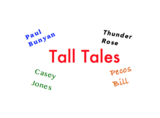
This lesson uses tall tale read alouds to reinforce the common elements, or text structure, of tall tales. As the text is read aloud, students examine the elements of the book that are characteristic of tall tales. Then using what they've learned, they write and perform tall tales of their own.

5th grade learning window Science

Topic: “All men are created equal”- Equality in the Declaration of IndependenceMarginalized Community: Women, Native Americans, SlavesInstructional/Grade Level: Upper primary/5th gradeStandard/Learning Target: SSS1.5.1 Evaluate the relevance of facts used in forming a position on an issue or event. SSS1.5.2 Construct arguments using claims and evidence from multiple sources. SSS4.5.3 Use evidence to develop claims in response to compelling questions.

This 5th grade STEM Storyline Unit from Washington Educational Service District 112 is focused around Climate Justice, Over five NGSS aligned lessons and using the 5E model, students are presented with the ideas of environmental stewardship and restoration.

Students will participate in Book Club by choosing groups of 3-5 students and a book at their reading level according to their interest, or the subject currently being studied. They will decide together how to split the book into three or more sections to finish in four weeks or less. They will prepare and write out a discussion role for each meeting (Word Wizard, Connector, Summarizer, Questioner, or Passage Person). This plan is written for either in class, blended, or remote learning.

This is a 5th grade lesson which focuses on Compare & Contrast skills. This lesson includes notes on how to rework for e-learning purposes.
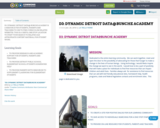
D3: DYNAMIC DETROIT DATA@ BUNCHE ACADEMY IS A RESOURCE FOR STUDENTS, PARENTS AND TEACHERS TO USE TO FIND CURRICULUM RELATED WEBSITES. THIS IS A USEFUL ONE STOP LOCATION TO START YOUR SEARCH TO RELATED AGE APPROPRIATE CONTENT MATERIAL FOR STUDENT WORK.
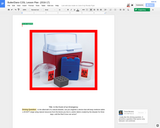
An engineering and design lesson for middle school (our 7th grade standards).
In the aftermath of a natural disaster, can you engineer a device that will keep medicine within a 40-60°F range using natural resources from the biome you live in, and/or debris created by the disaster for three days, until the Red Cross can arrive?
You are a team of relief workers in __________________after a major earthquake/tsunami has occurred. Your team lead as just told you about a young women with diabetes has been injured and needs insulin to be delivered __________ miles away (no open roads). Your team will need to research, design, and build a portable device to keep the insulin between _____ and ______ °(F/C) for _____ days. Once you return you will present the effectiveness of your device to your lead and a team other relief workers showing your both your design/device and explaining the process.

Procedural Notes strengthens student's fluency

CK-12's Grade 5 Elementary Math is a series of videos and interactive videos designed to teach basic math concepts to 5th graders. Concepts covered include Multiplication and Division, Place Value, Multiple Operations and Grouping, Decimals, Time, Fractions, Money, Measurement, and Geometry.
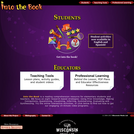
The "Into the Book" web site is designed to help elementary students practice eight reading comprehension strategies through playful interactive activities. The site focuses on eight research-based strategies: Using Prior Knowledge, Making Connections, Questioning, Visualizing, Inferring, Summarizing, Evaluating and Synthesizing. "Behind the Lesson," the teacher area of the site, provides information, lesson plans and other resources for teachers.

ELA Scales for ND ELA Standards prioritized by ND 5th grade teachers

Mathematics Scales for ND Mathematics prioritized by ND 5th grade teachers.

This is a 5th grade lesson plan meant to teach students about onomatopoeias. The lesson should take a total of 55-60 minutes.

Mientras que el desperdicio de comida no es típicamente visto como un contribuyente de emisiones de gas de efecto invernadero, es un contribuyente mayor. Reducir el desperdicio de comida es la 3era solución más beneficiosa para la reducción de dichos gases. La comida desperdiciada y los recursos para producirla, son responsables del aproximadamente 8% de las emisiones globales de gases de efecto invernadero. Cuando los individuos y grupos reducen el desperdicio de comida, esto tiene un gran impacto en la reducción de emisiones de gases de efecto invernadero. La conciencia del desperdicio de comida es aplicable a cada persona y comunidad. En este caso, los estudiantes van a conducir una “auditoría de desperdicio de comida”. Cada clase de estudiantes participantes recolecta, clasifica y mide su desperdicio de comida por un día durante el almuerzo. Los estudiantes discuten las causas locales y globales y los efectos del desperdicio de comida en el ambiente. Los estudiantes también aprenden las conexiones culturales alrededor del desperdicio de comida de los expertos o gente mayor de las tribus locales, e indagan cómo las diferentes agencias en la comunidad lidian con el desperdicio de comida (e.g. tiendas de abarrotes, bancos de comida, la ciudad). Los estudiantes presentan sus resultados y crean un plan de acción.

El objetivo del caso de quinto grado, Bosques: Beneficios del ecosistema forestal, es aprovechar el conocimiento previo de los estudiantes sobre las necesidades de las plantas / animales, los ecosistemas y la protección de los recursos de la Tierra. En este caso, los estudiantes desarrollan una comprensión de los ecosistemas forestales, los beneficios de los árboles, incluyendo la captura de carbono, y lo que los árboles necesitan para crecer/ agregar masa.
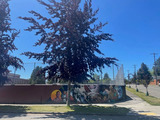
Students will learn how trees grow and cycle matter, and trees’ roles in a changing climate. The urban heat island effect is examined and students learn about the many benefits trees offer cities. The storyline culminates with students examining the trees and canopy cover in their or a nearby city and proposing actions to increase the urban forest through a letter to city officials.

Students will learn what a preposition is and it's relationship to other words in the sentence. They will identify the preposition, prepositional phrase, and direct object in a given paragraph. They will look at pictures and compose sentences to describe the pictures using prepositional phrases. Finally, they will compose their own sentences with prepositional phrases and act them out on video. They will be getting feedback from classmates before turning in final work.